By Madi Quinn (’25)
This is part of a series of student-written blog posts. Students who participated in our annual faculty-led summer study abroad program in Spain with Dr. Bender in 2023 – Spain Today: Madrid, Pamplona y el Norte – wrote blog posts as part of their assignment for Spanish 565: Cultures & Civilization of Spain. We’ll be sharing them here every Wednesday, so stay tuned to see the variety of topics chosen. If you’re interested in earning 6 Spanish credits for your major or minor by studying in Spain this summer — May 19-June 19, 2024 — check out the information & APPLY here or contact Dr. Bender with questions.
(Education Abroad direct application HERE, open the week of Nov. 6)
Hello! My name is Madison Quinn, and I am starting my junior year at K-State, where I am pursuing majors in Advertising & Public Relations and Spanish, with a minor in Marketing, along with a Social Media Management certificate. The reason why I chose to study in Spain is to not only improve my Spanish language skills, but also to gain new perspectives and enrich my personal growth through exposure to different cultures. During my study abroad program at the Universidad de Navarra in Pamplona, I became interested in the city’s deeply rooted traditions, especially the internationally renowned Festival of San Fermín, honoring Saint Fermín, co-patron saint of Navarre. In my upcoming discussion, I will share my insights into this fascinating festival and its significance, explaining why it has remained an essential part of Pamplona’s cultural heritage since the Middle Ages.
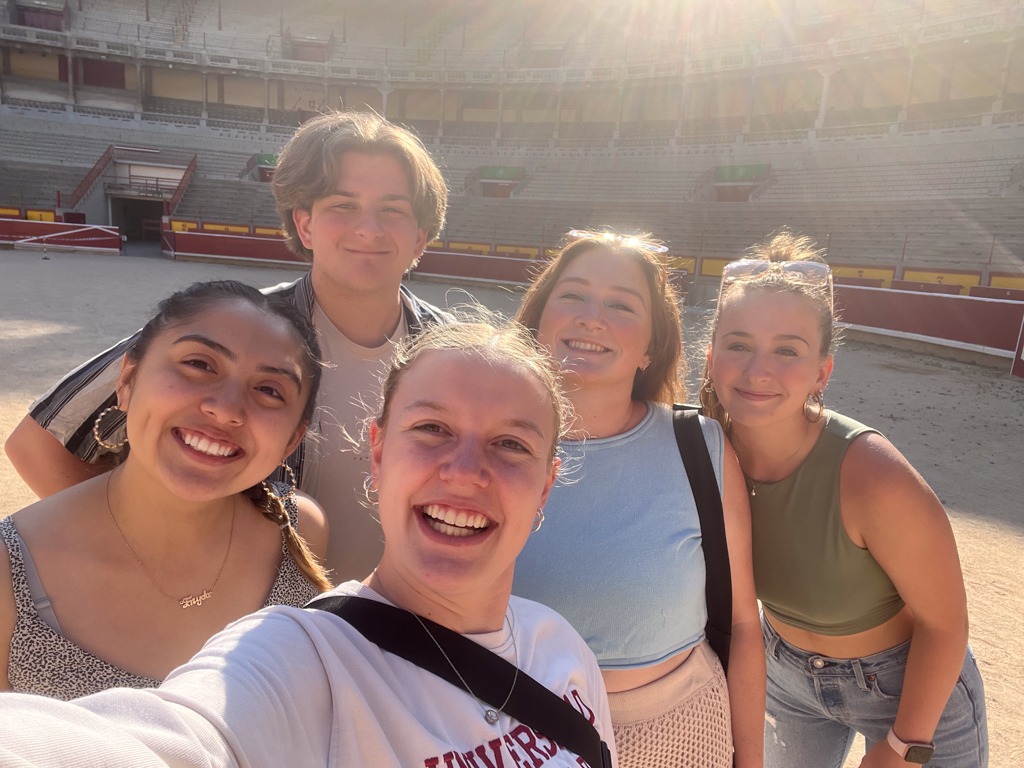
The Festival of San Fermín takes place each year from July 6th to July 14th, and begins with the exciting “Chupinazo” ceremony. Thousands of people gather around the Town Hall (Ayuntamiento) in anticipation. As the clock strikes twelve, a rocket is launched into the air from the Town Hall, marking the official start of festivities. The electrifying atmosphere during this moment sets the stage for days of exhilarating celebrations.
The Encierro, also known as the Running of the Bulls, stands as the most iconic event during the San Fermín Festival. Taking place each morning at 8AM from the 7th to the 14th of July, daring participants called “mozos” dress in traditional white attire accented with vibrant red scarves and run ahead of a powerful herd of bulls through the narrow streets of Pamplona. The bulls, guided carefully from a corral just outside the city center walls, burst out through the gates towards the Plaza de Toros, with the mozos starting only a few meters ahead of them. The Encierro serves as a test of courage, while paying homage to Saint Fermín. Before the race begins, both participants and attendees sing a prayer to Saint Fermín three times, seeking for his blessing and protection.
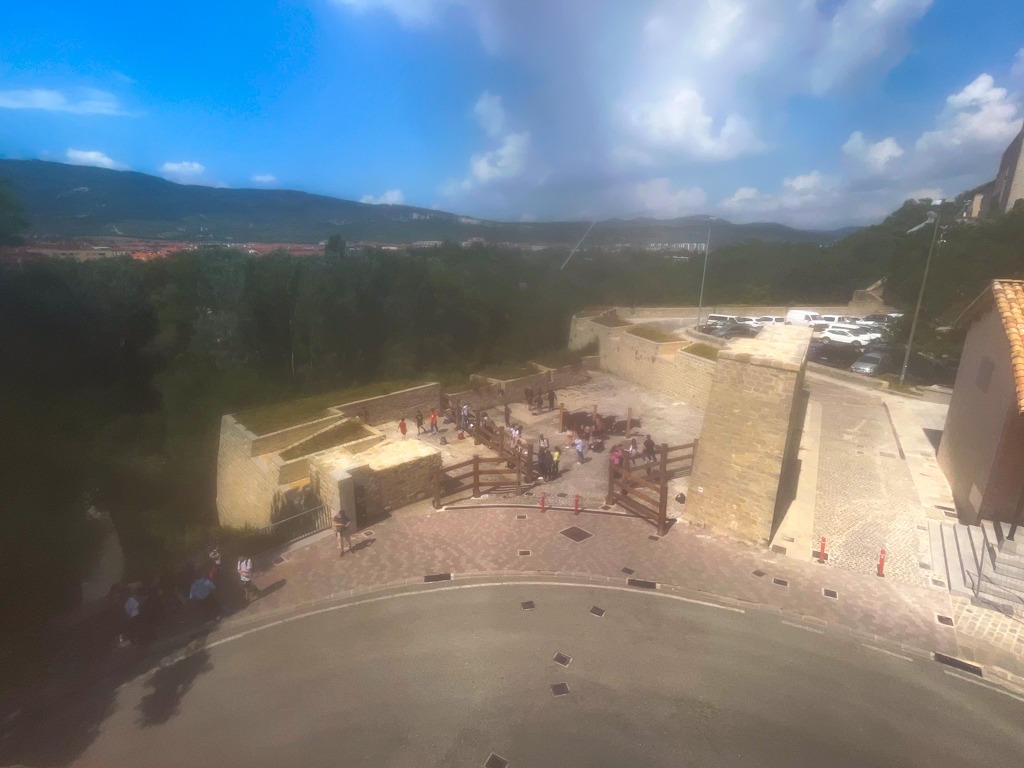
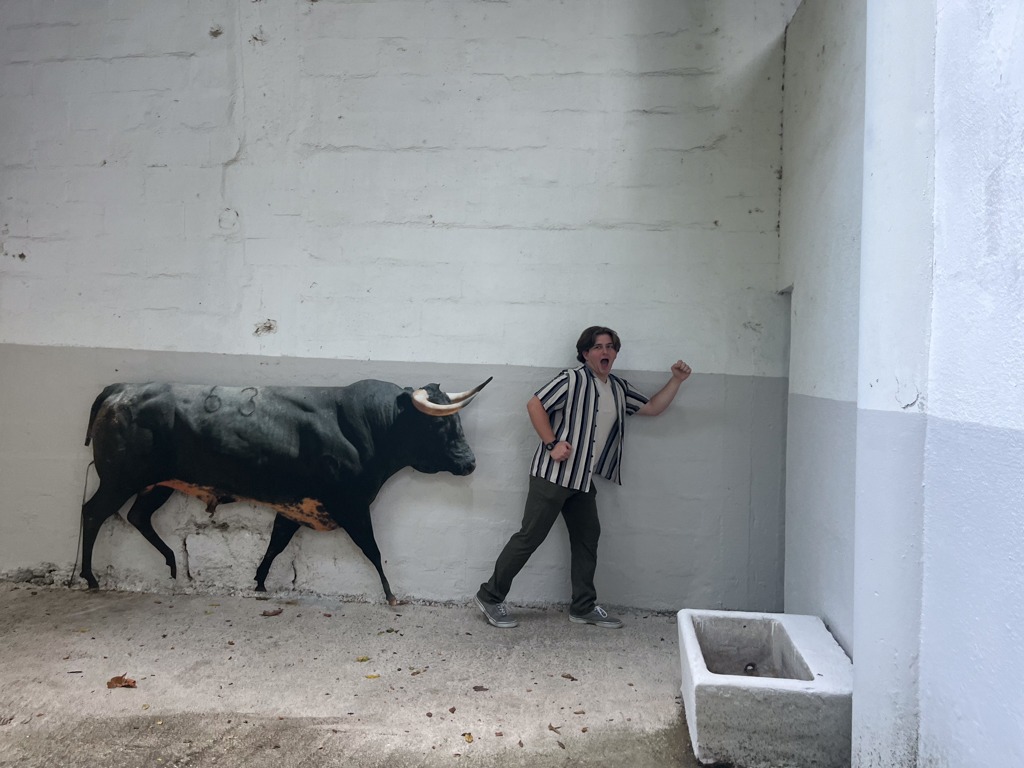
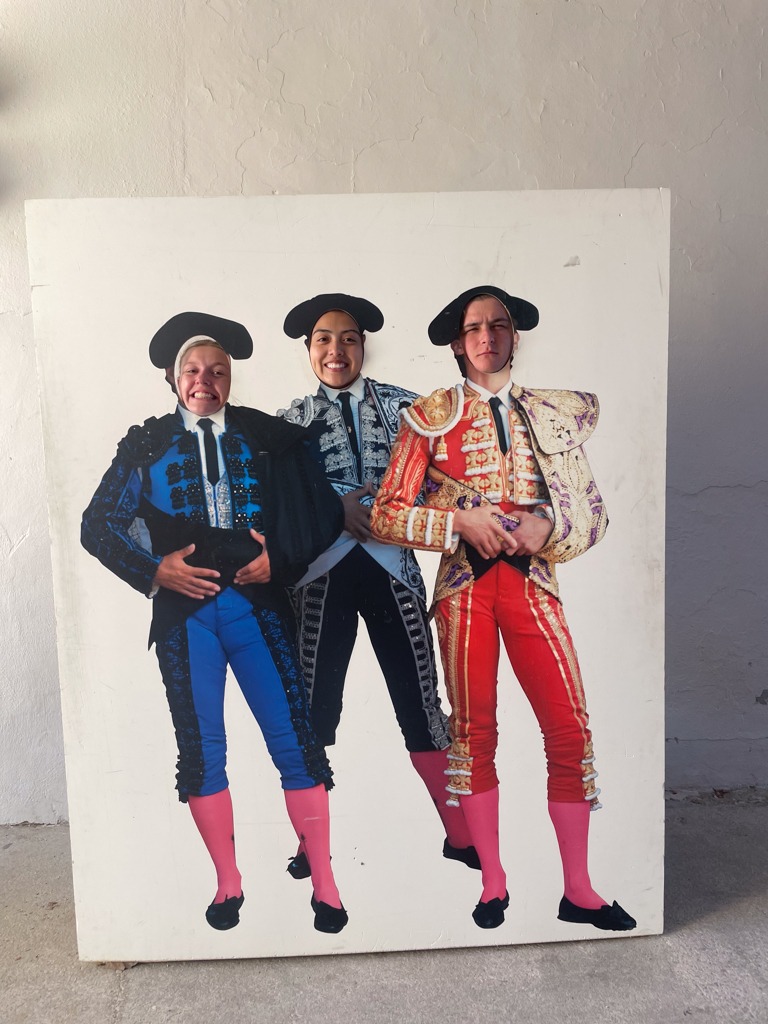
However, this thrilling tradition has not been with controversies, sparking debates on animal rights and participant safety. Nevertheless, the Festival of San Fermín remains to be an integral part of Pamplona’s identity, captivating visitors with its vibrant spirit, courage, and rich cultural significance. The Festival of San Fermín gained international fame thanks to the works of the renowned American author, Ernest Hemingway. Hemingway’s fascination with the festival and Spanish culture amplified the Encierro and the Festival of San Fermín’s global appeal. His novel The Sun Also Rises (or Fiesta) introduced the event to a wider audience, firmly establishing Pamplona as a captivating destination for culture enthusiasts and tourists.
During my stay in Pamplona, I had the opportunity of walking the Encierro route, providing me with insight into the arguments surrounding animal cruelty. The narrow streets of the route are further confined by the addition of fences along the edges of the streets to create barriers between the bulls, the mozos, and the spectators. Additionally, I explored the Plaza de Toros, the venue for traditional bullfights following the Encierro. It was fascinating to observe the strategic placement of barriers around the tunnels and corrals within the bullring, designed to ensure the safety of those handling the bulls behind the scenes and during the bullfights.
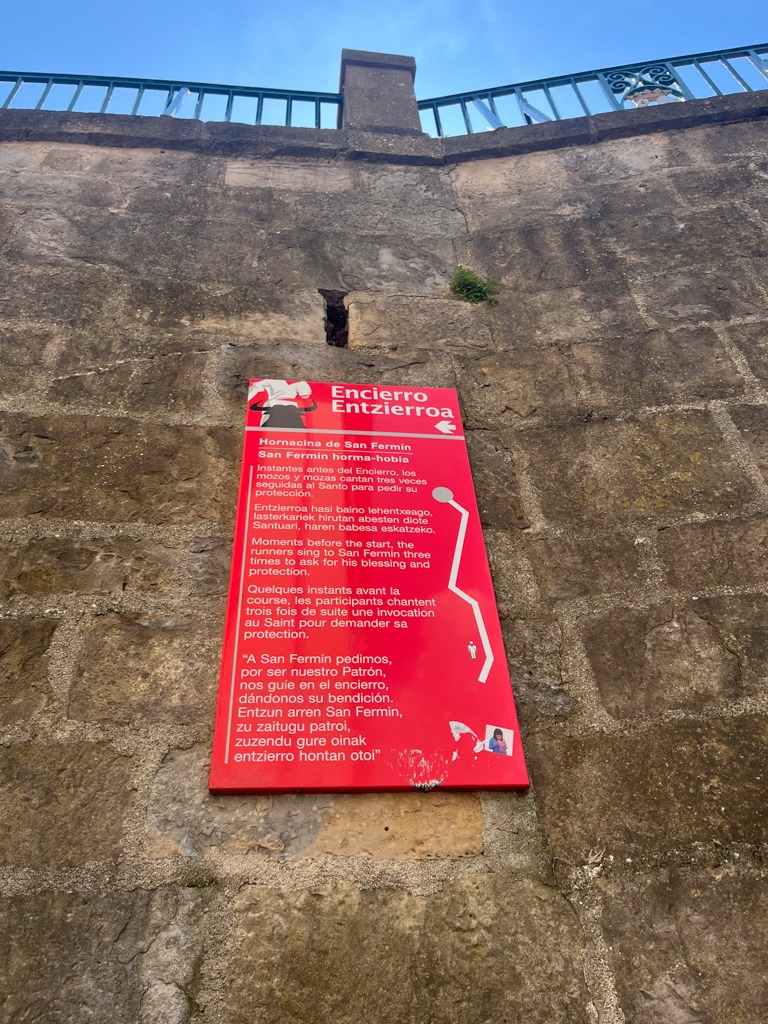


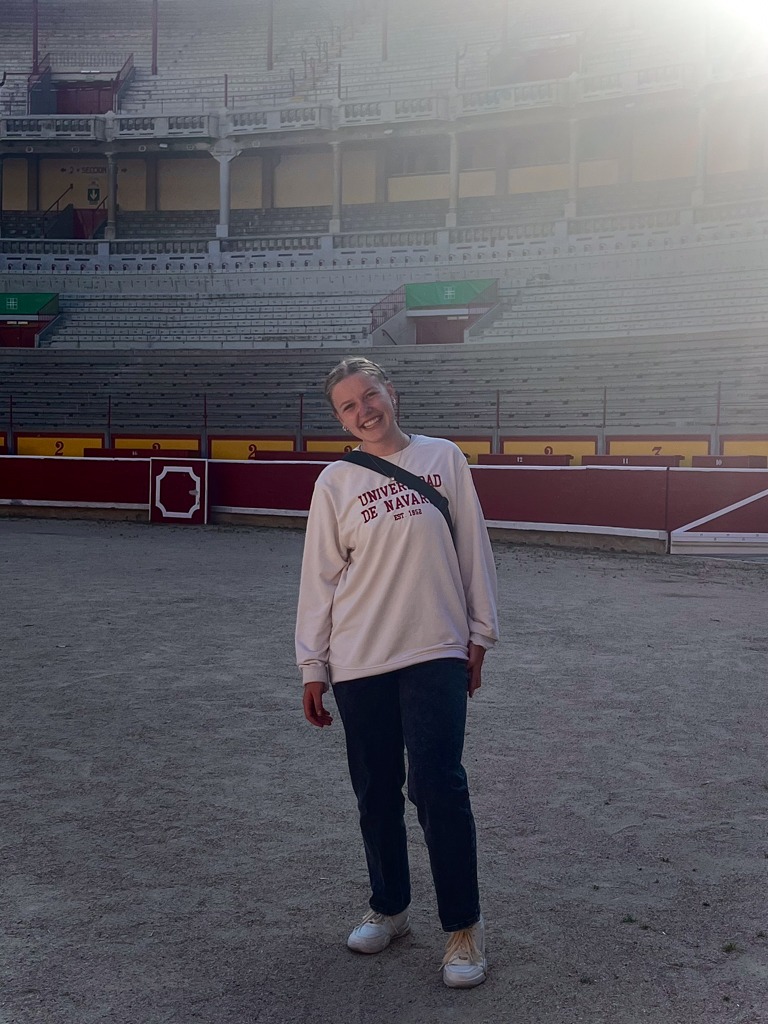
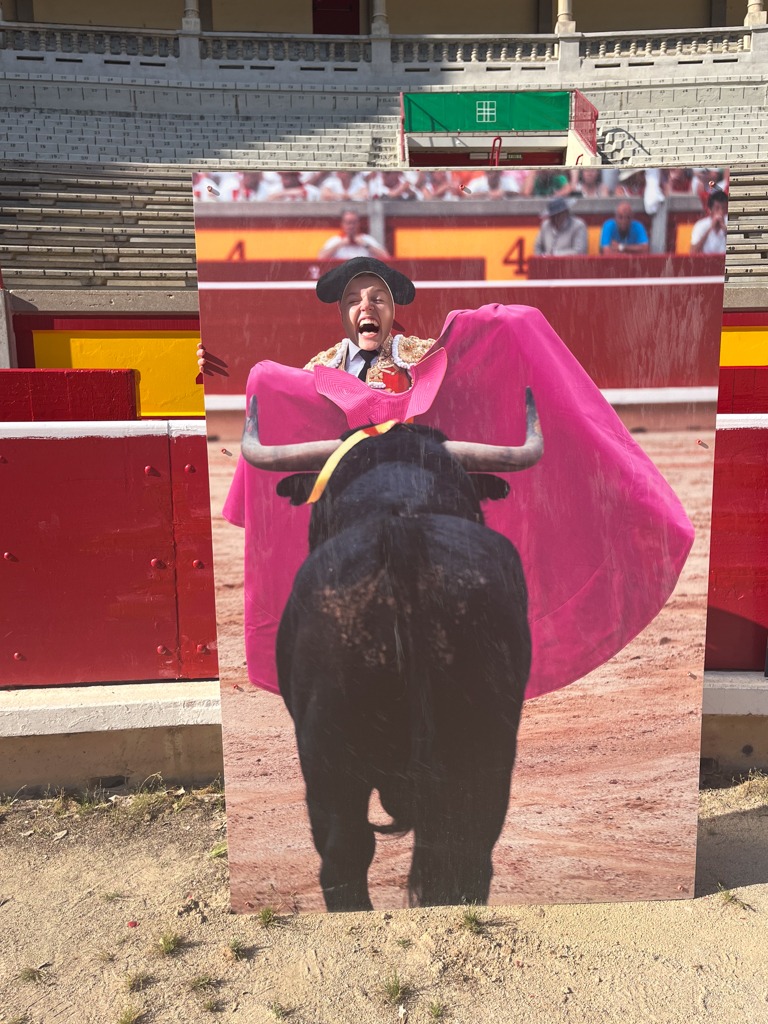
Being close to these iconic places just a few weeks before the festivities began, amplified my enthusiasm and appreciation for the Festival of San Fermín and the Encierro, inspiring me to learn more about these events. While exploring the city and the Encierro route, I encountered several shops dedicated to selling souvenirs, including red scarves and gifts, all catering to tourists and San Fermín enthusiasts.
As I dedicated my research to the Festival of San Fermín, I was reminded of the enduring power of tradition and its profound impact on a region’s identity. Pamplona’s celebration of Saint Fermín continues to be a cherished and exciting event, resonating with both local and global audiences. Despite lingering controversies, the festival perseveres, honoring Spain’s cultural legacy and welcoming new generations to revel in its timeless tradition. I eagerly anticipate the day when I can return to Pamplona during the festival and fully experience the breathtaking events I’ve researched about. Until then, I will continue to digitally witness the Encierro and the Chupinazo. ¡Viva San Fermín!
Below are several pictures from walking Encierro route, touring the bullring (bullfighting stadium), and exploring the evidence of San Fermines across Pamplona:
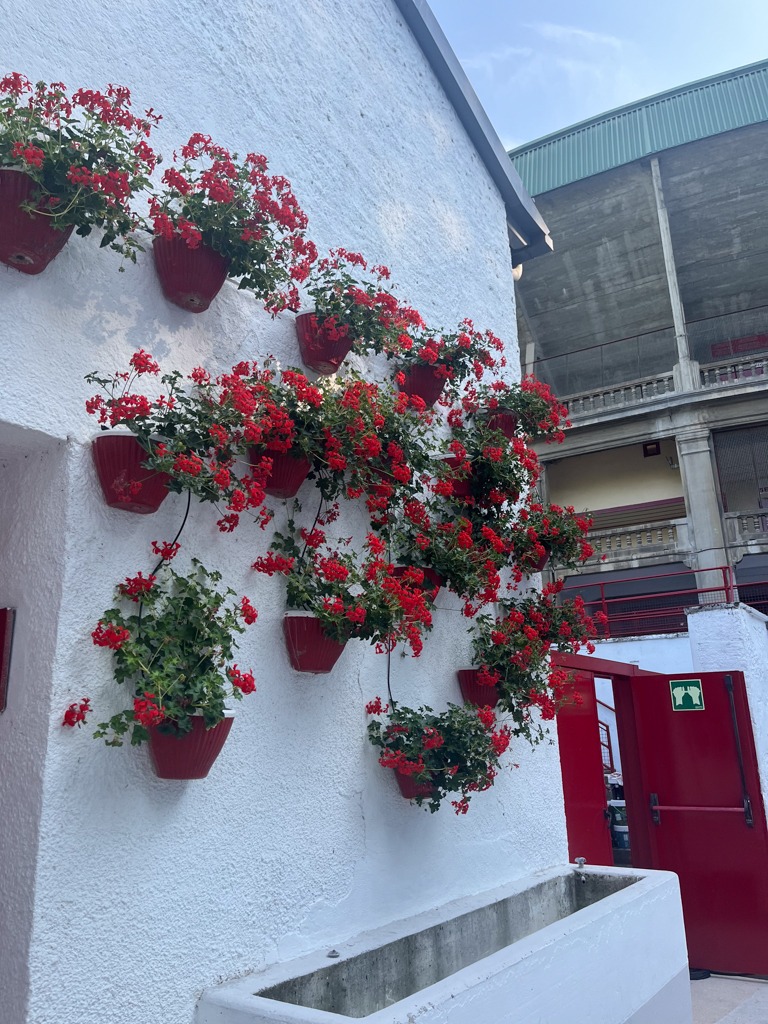
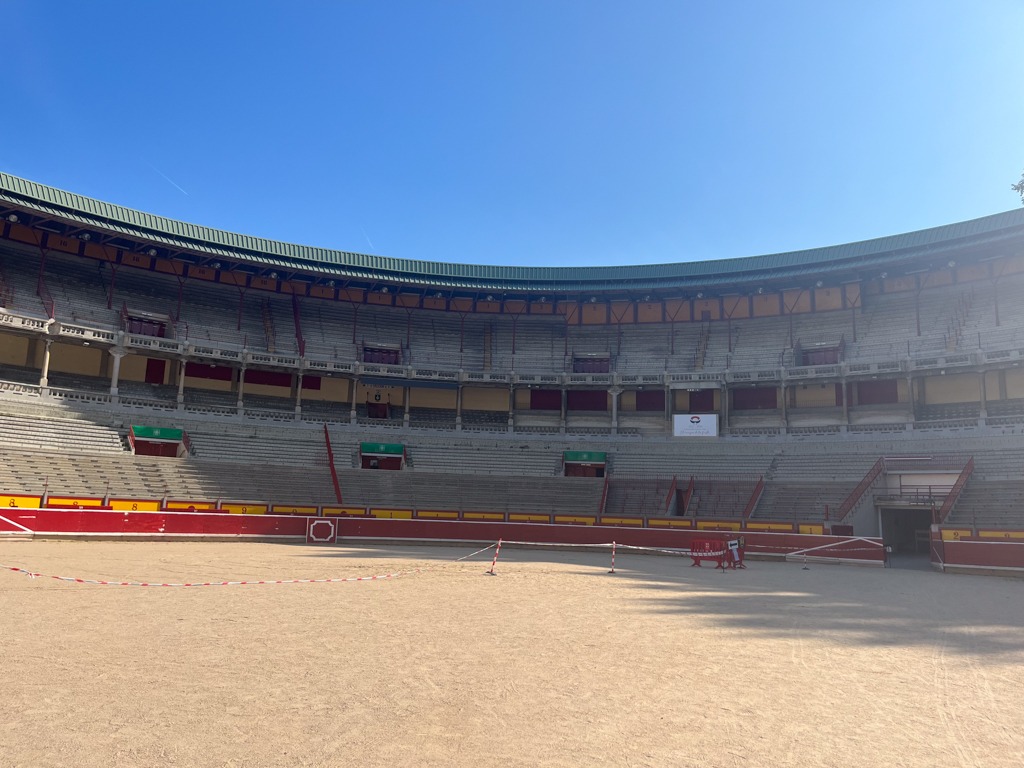
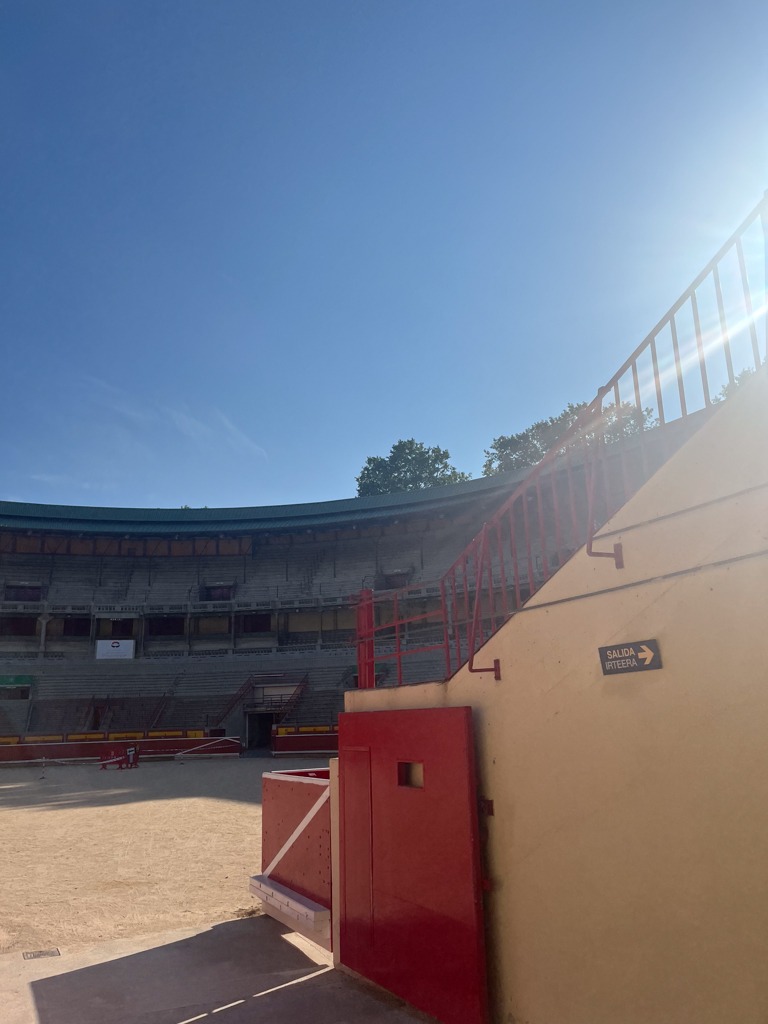
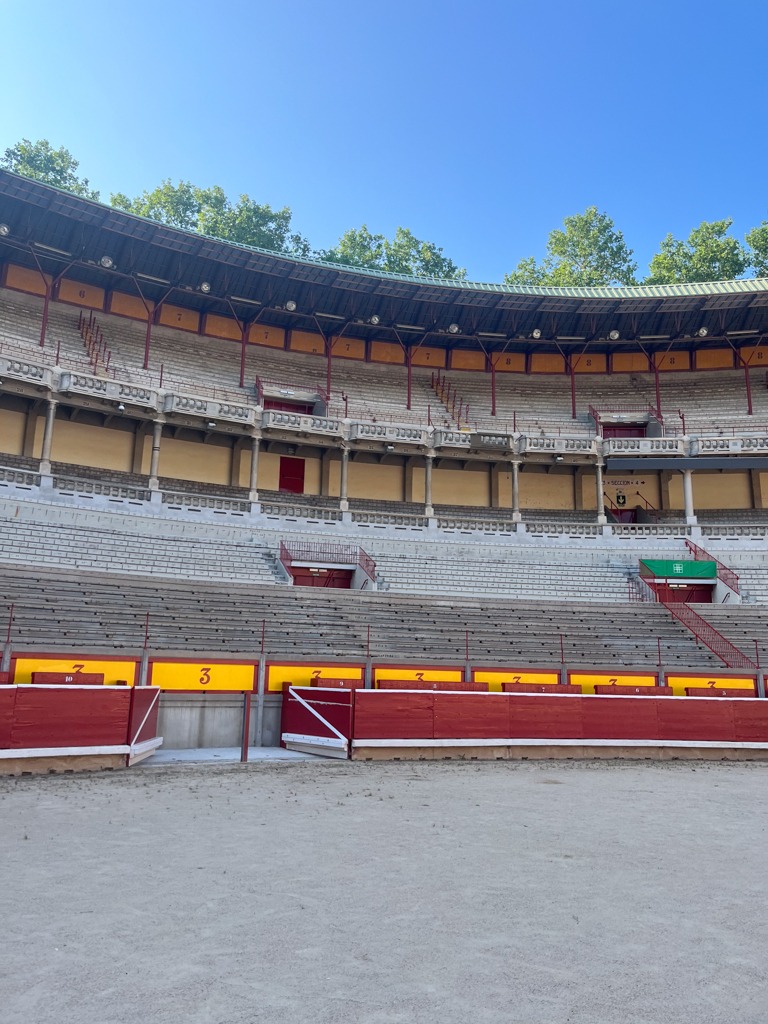
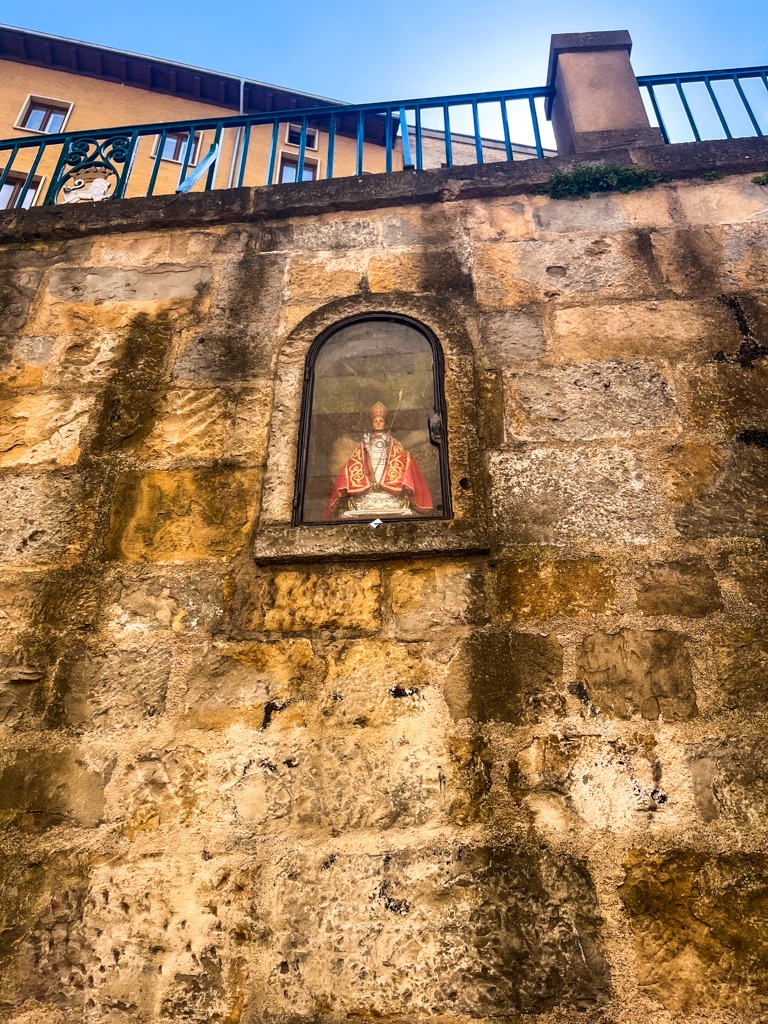
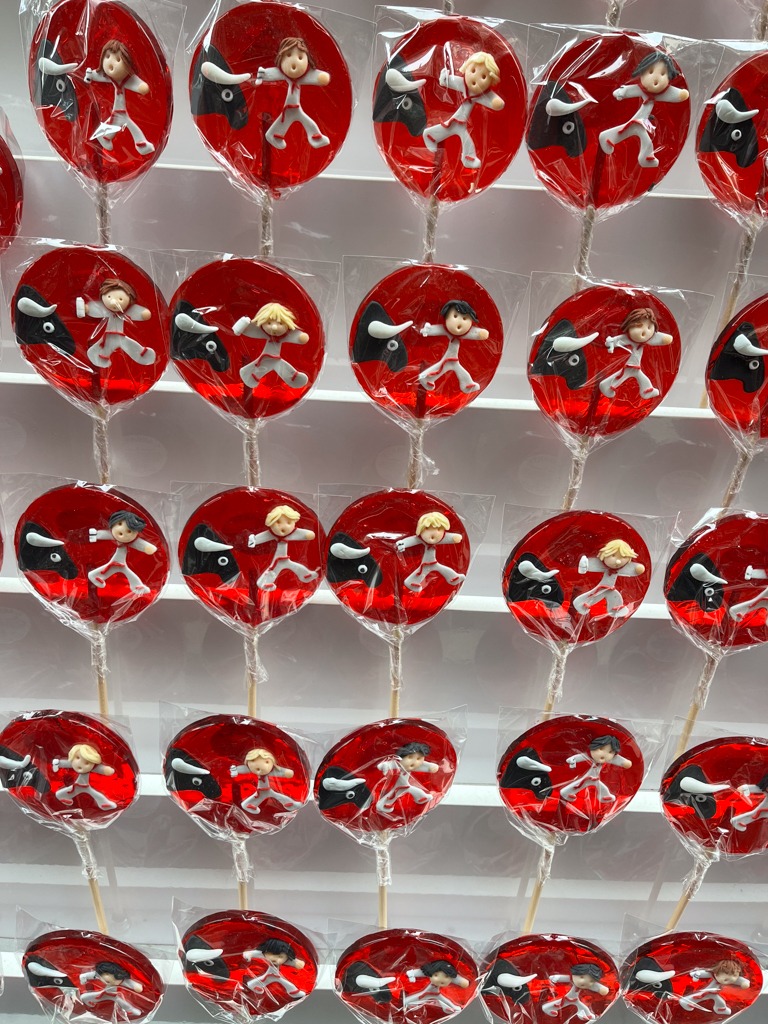
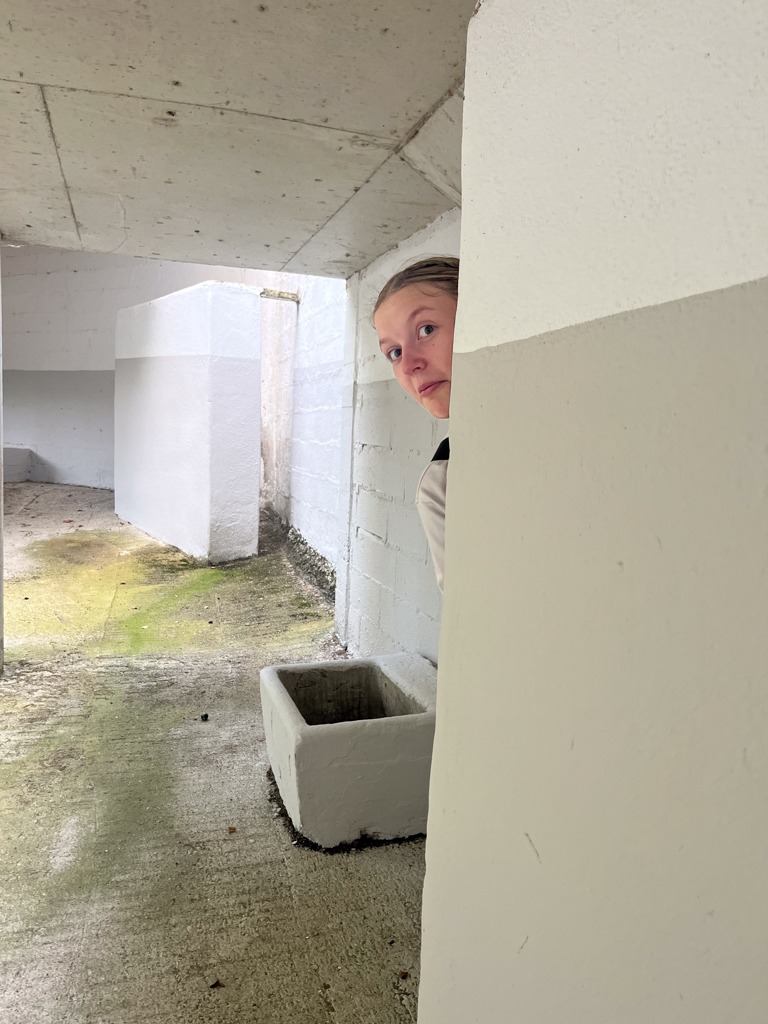

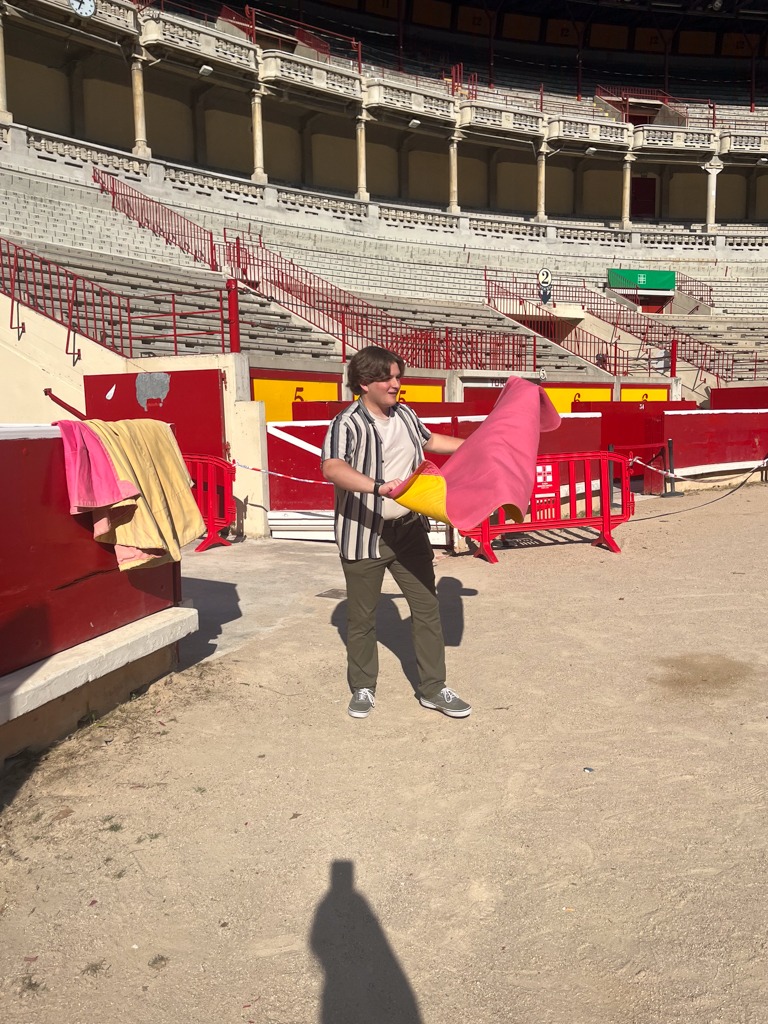
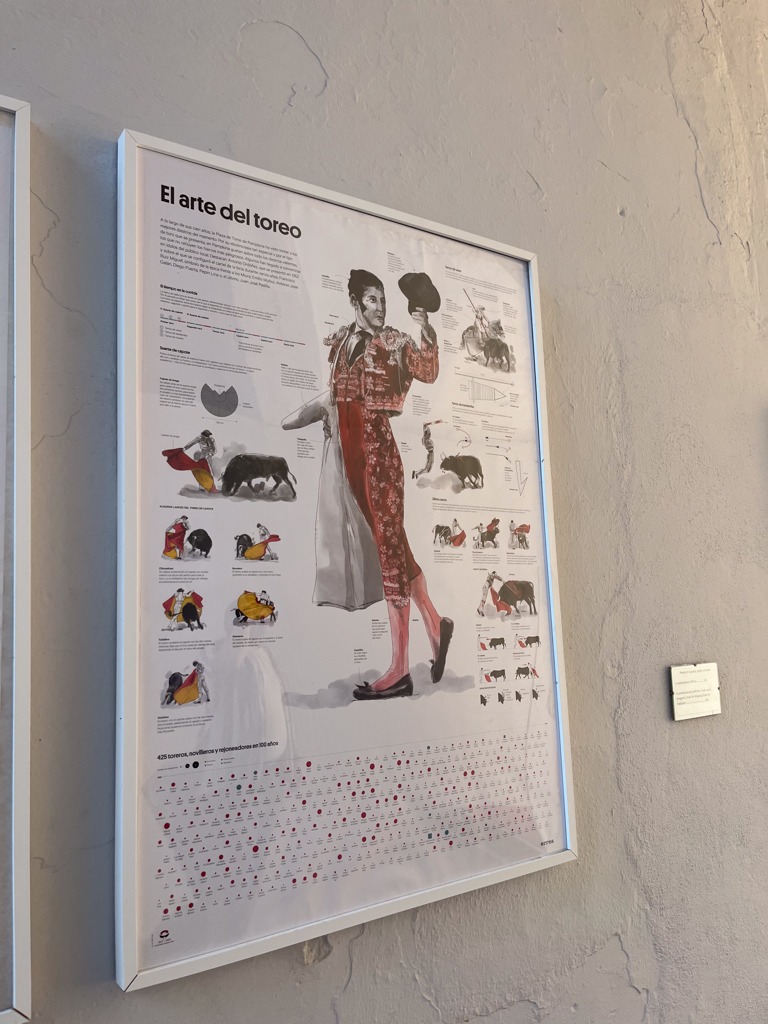
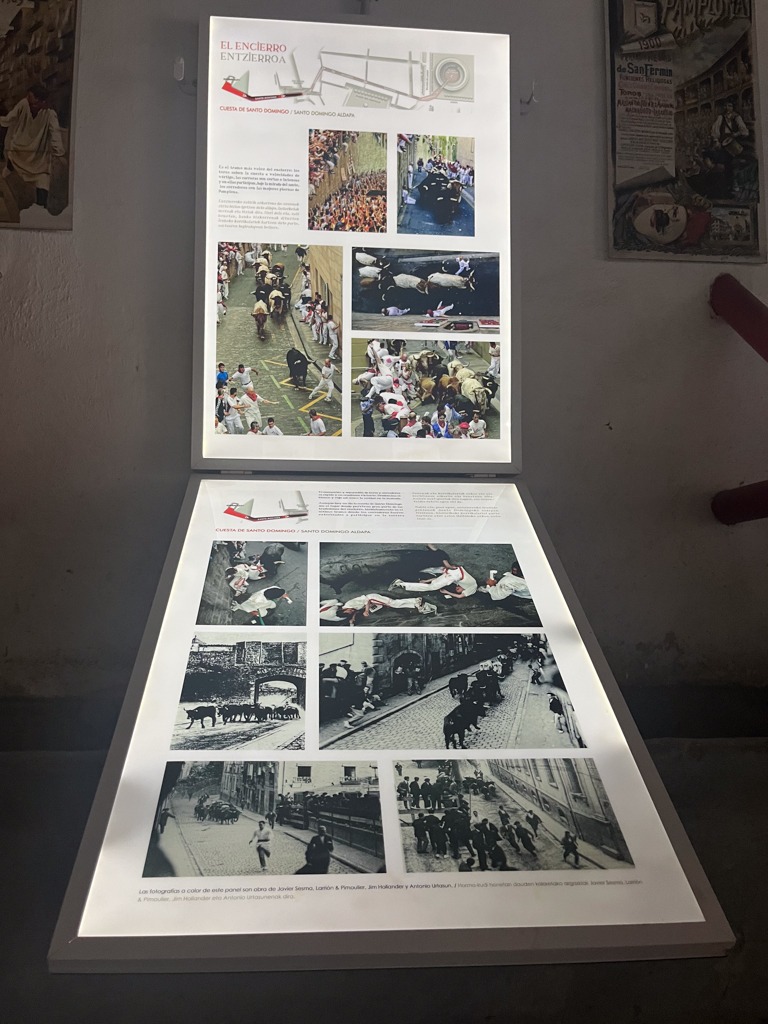
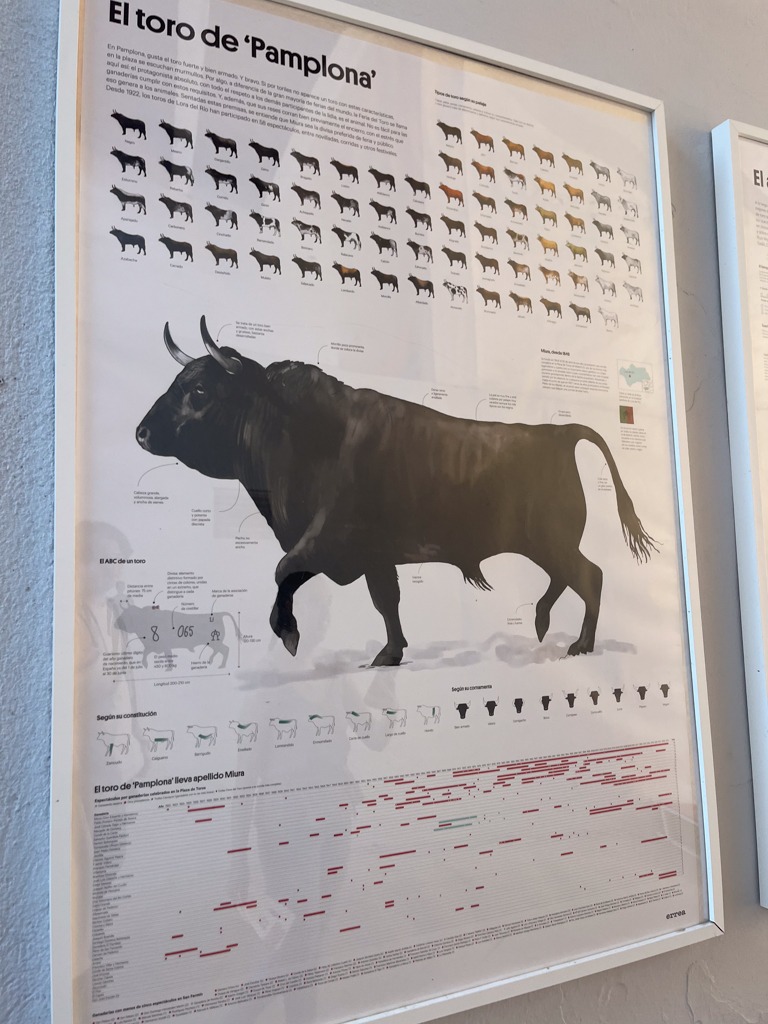
If you’re interested in earning 6 Spanish credits for your major or minor by studying in Spain this summer — May 19-June 19, 2024 — check out the information & APPLY here or contact Dr. Bender with questions.
(Education Abroad direct application HERE, open the week of Nov. 6)



















Leave a comment